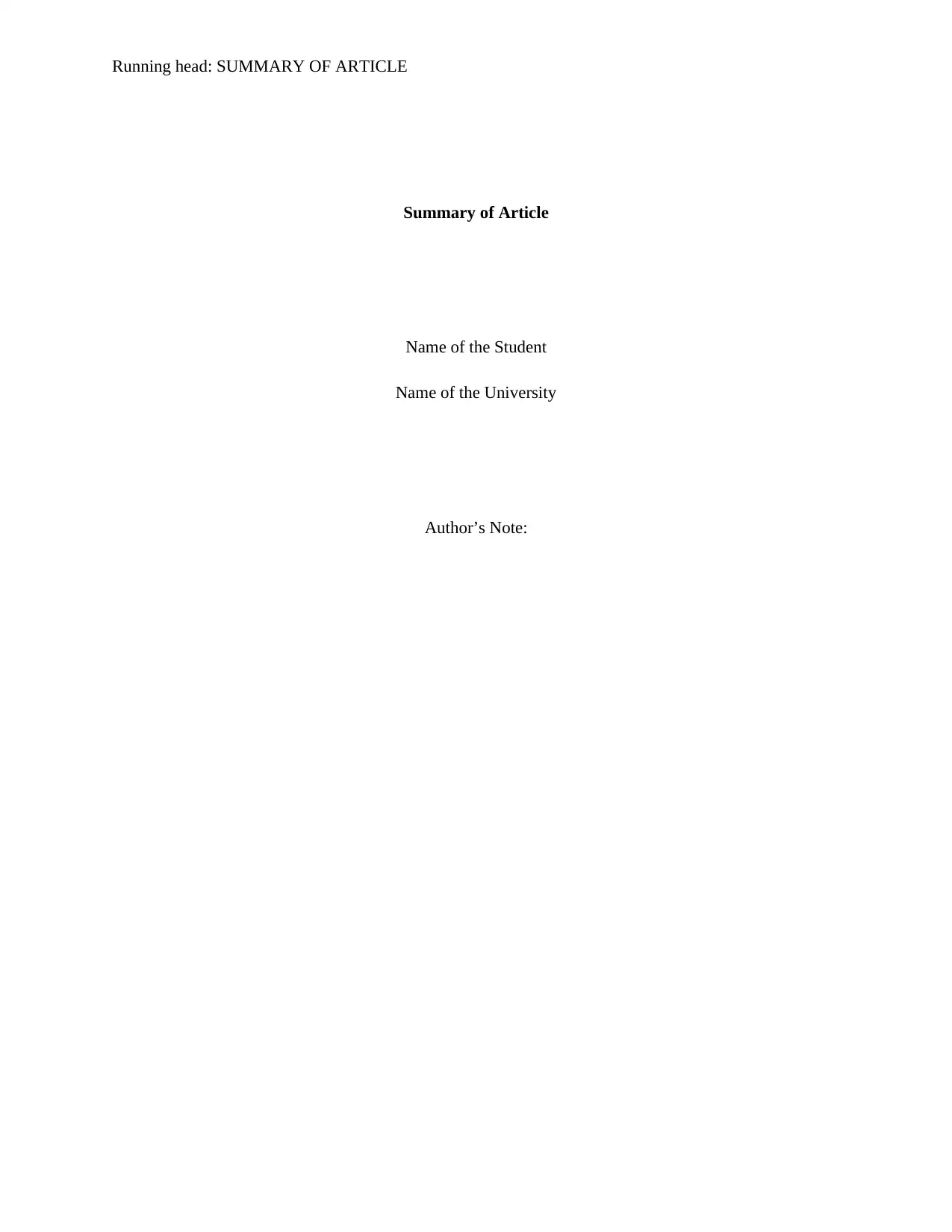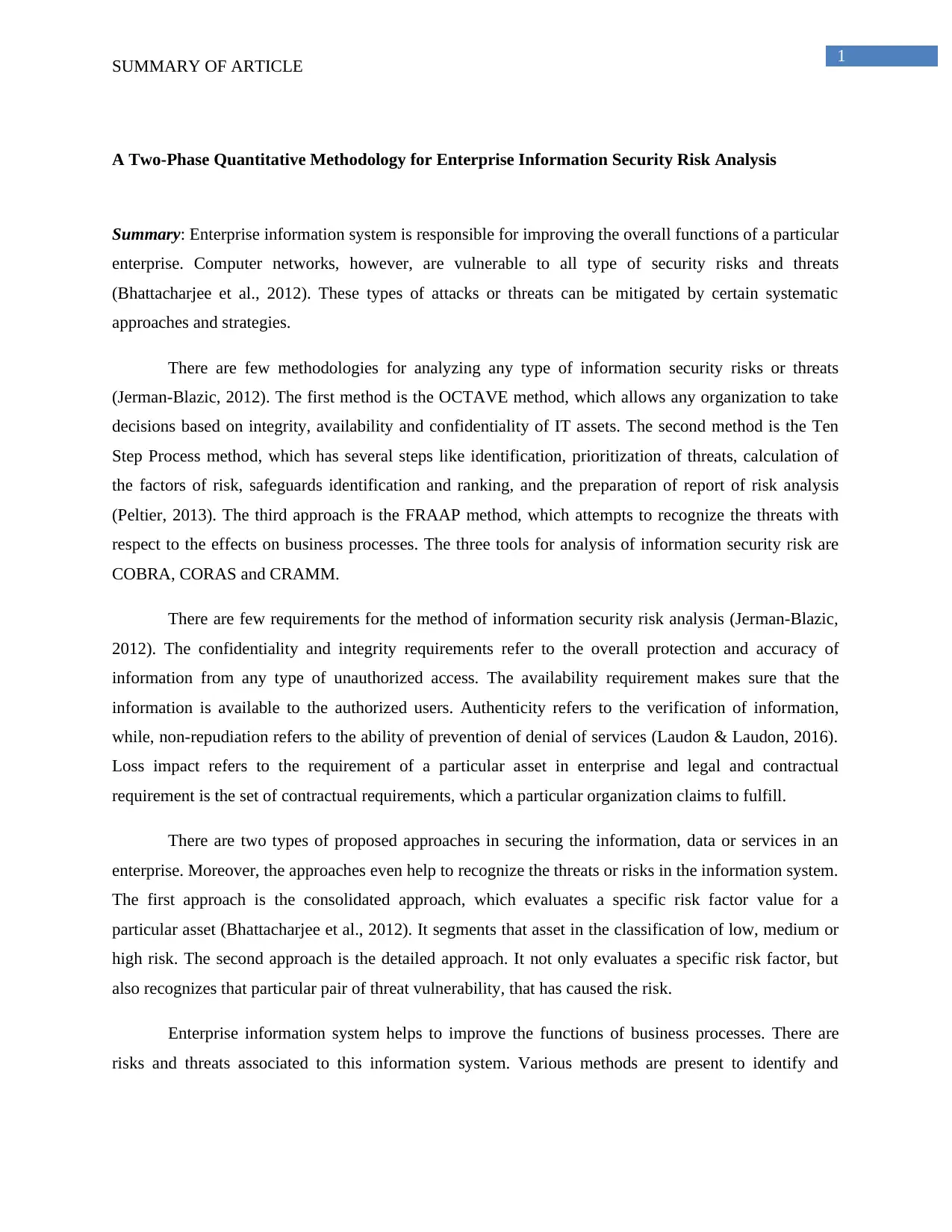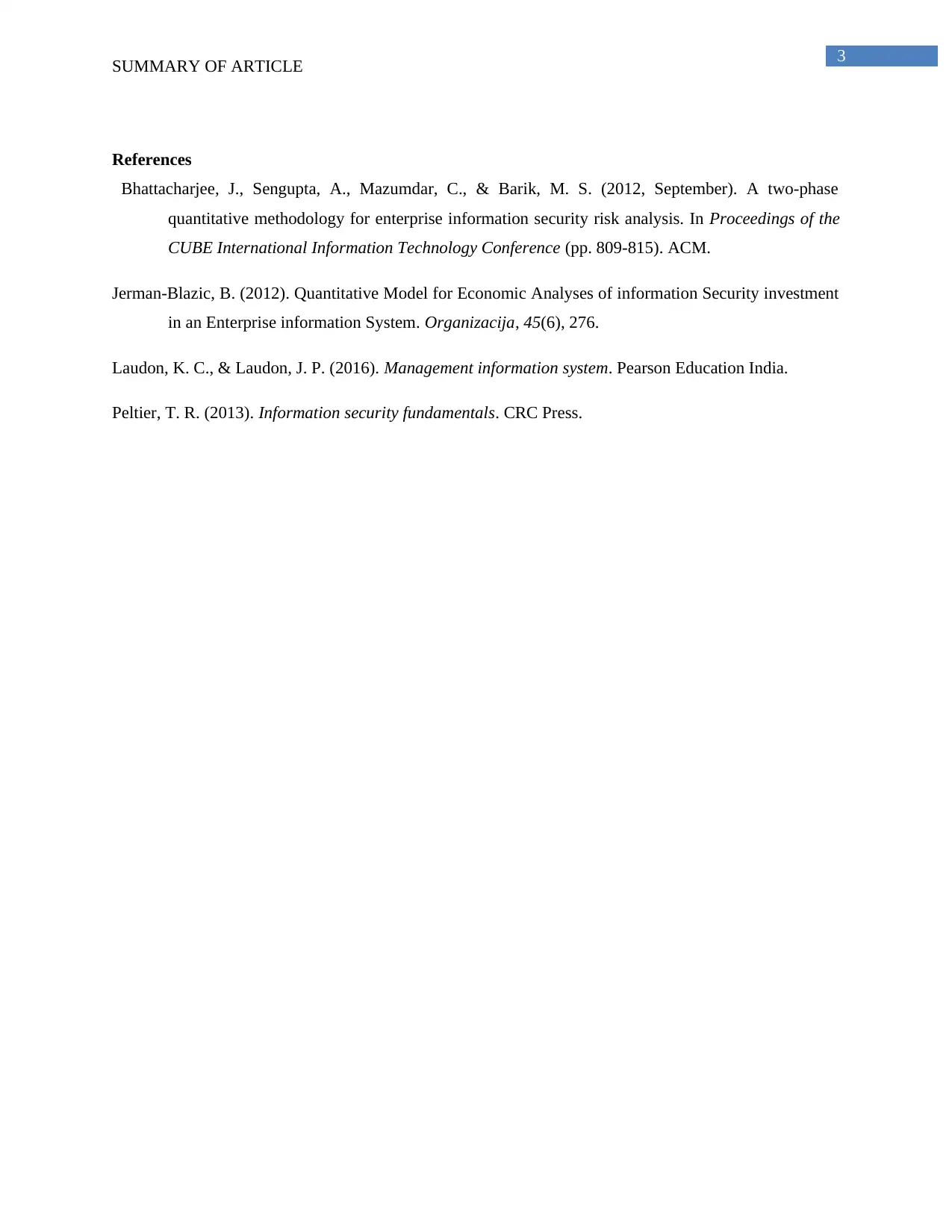Enterprise Information Security Risk Analysis: A Comprehensive Report
VerifiedAdded on 2020/05/11
|4
|623
|221
Report
AI Summary
This report provides an analysis of enterprise information security risks, focusing on various methodologies and tools used to mitigate threats. It discusses the OCTAVE, Ten Step Process, and FRAAP methods for risk assessment, alongside tools like COBRA, CORAS, and CRAMM. The report highlights the importance of confidentiality, integrity, availability, and non-repudiation in securing information systems. It also presents two proposed approaches: the consolidated approach, which evaluates a specific risk factor, and the detailed approach, which identifies threat-vulnerability pairs. The analysis emphasizes the role of enterprise information systems in improving business processes and the associated risks and threats, ultimately offering insights into effective risk management strategies. The report references key literature, including works by Bhattacharjee et al., Jerman-Blazic, Laudon & Laudon, and Peltier.
1 out of 4











![[object Object]](/_next/static/media/star-bottom.7253800d.svg)